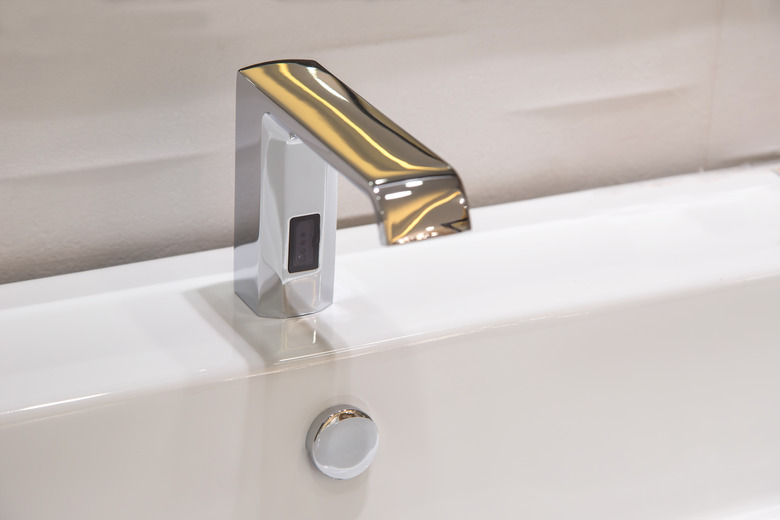How To Troubleshoot Automatic Faucets
Automatic faucets can get clogged or leak just like standard faucets. Before you begin to troubleshoot the solenoid valve, which is the technology responsible for the automatic on and off, check to make sure there are no clogs or loose connections in the standard plumbing equipment. If everything is okay, then the problem could be caused by the solenoid valve.
How Automatic Faucets Work
How Automatic Faucets Work
Automatic faucets use a technology that is similar to a smartphone screen. There are two sensors on the faucet: one is located in the spout and the other one is in the handle. Touching either spot triggers something called a solenoid valve, which turns the water on and off.
The solenoid valve is powered by battery and there are numerous wires that connect everything together to create the automatic on/off. Therefore, there are several technical components that could cause problems. As with any electronics, batteries will need to be replaced from time to time.
Troubleshooting Little or No Water
Troubleshooting Little or No Water
Before assuming that the problem is with the solenoid valve, perform the basic check that would be done on a standard faucet. If only a small amount of water is coming out, check to see if the aerator is clogged by removing it and then turning on the faucet. If water streams out, soak the aerator in vinegar and then reinstall. If you remove the aerator and there's still little or no water, then check your supply hose for clogs.
If your automatic faucet is leaking, check to confirm that your cartridge nut is secure and your cartridge isn't broken. Next, check the washer and any rubber seals for damage. If it appears that the inlet hose is leaking, then it needs to be tightened. If everything is in good condition and all parts are secure yet the faucet is still running, make sure each piece is clean and free from blockages.
Check the Solenoid Valve Battery
Check the Solenoid Valve Battery
If all of the standard plumbing components are in good condition and clean, it's possible that the battery needs to be replaced. For many faucets, the LED light on the faucet will turn blue when cold water is running and red when hot water is running. When the faucet is off, the light will be off as well. However, if the water is off and the LED light is flashing, it indicates a low battery. If the battery is low or dead, the faucet should return to normal water flow once the battery has been replaced.
Check the Solenoid Valve
Check the Solenoid Valve
If you are still experiencing problems after checking the standard plumbing and the battery, the solenoid valve may be dirty. If you see debris in your valve, turn the water off and carefully disassemble the valve, paying attention to how it came apart. Clean and reassemble the solenoid valve. Then test the faucet.
If the valve is clean, and you are still experiencing a problem, the valve may need to be replaced. To check, first turn the faucet off, remove the hose from the solenoid valve and then turn the faucet back on. If water comes out, then the solenoid may need to be replaced.
Zurn Sensor Faucet Won't Shut Off
Zurn Sensor Faucet Won't Shut Off
If your Zurn sensor faucet won't shut off, check the basics mentioned above. If that doesn't solve the problem, then it's likely a dirty solenoid valve. If you see debris in your valve, turn the water off and carefully disassemble the valve, paying attention to how it came apart. Clean the valve and get rid of all dirt in the diaphragm and/or plunger tip. Then, reassemble the solenoid valve and test. If it's still leaking, it may need to be replaced.
Sloan Automatic Faucet Won’t Turn Off
Sloan Automatic Faucet Won't Turn Off
If your Sloan automatic faucet won't turn off, first check to confirm all connections and components of your faucet are tightly secured into place. If everything is secure, and the faucet is still running, make sure there all parts are clean and there are no blockages. Once everything else is confirmed to be clean and working well, the problem may be that the solenoid valve is only partially closing and it needs to be replaced.
